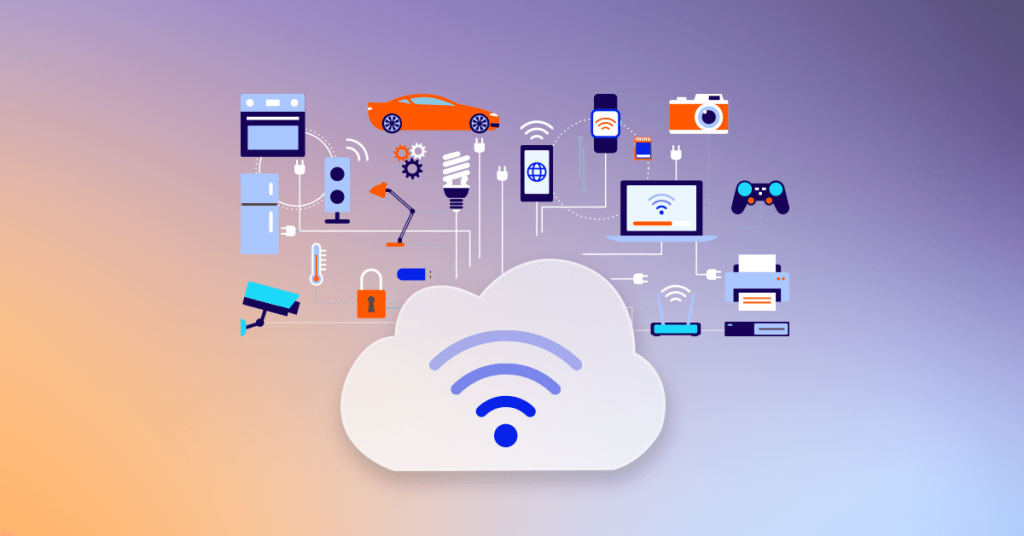Intro to IoT in Smart Homes
Imagine living in a house where all of your lights, thermostats, and security systems are controlled by just your voice or your smartphone AND you save money by using them. Sounds very convenient, doesn’t it? Welcome to the world of smart homes, where the Internet of Things (IoT) is changing the way we live! The purpose of this blog is to take a closer look at what IoT is and how it impacts the way we live. This blog will cover the ways IoT can save energy and improve things like security and home automation. We will also go over the different types of devices that fall under the broad category of IoT and how each device makes life better.
What is IoT?
The Internet of Things (IoT) describes the network of physical objects (“things”) that are embedded with sensors, software, and other technologies for the purpose of connecting and exchanging data with other devices and systems over the internet. These devices range from ordinary household objects like thermostats to sophisticated industrial tools like proximity sensors. You might already have an IoT device in your home, like an Amazon Alexa, or even ON you, like an Apple Watch!
Common Ways IoT Devices Communicate
There are multiple different ways IoT devices communicate, but we will be looking at the top 4 most common communication protocols in this blog.
Wi-Fi is one of the most popular ways IoT devices communicate. Wi-Fi allows IoT devices to send and receive data, work remotely, and handle tasks that need a lot of bandwidth. With Wi-Fi, multiple devices can connect to the internet or a local network without needing extra hubs. Many smart home devices like Amazon Echo and Google Nest Hub run on Wi-Fi.
IoT devices use Bluetooth to connect and share data wirelessly. Bluetooth helps smart devices like speakers, watches, and headphones stay connected all the time. One very good benefit of Bluetooth – in my opinion – is that you can connect devices wirelessly, which means no more messy cables just to do simple tasks like listening to music.
Zigbee and Z-Wave are also wireless technologies that help IoT devices communicate with each other. They create a network where devices like smart lights, locks, and sensors can work together without using a lot of power. Zigbee is great for connecting many devices at once, while Z-Wave has a longer range and is less likely to have interference.
Cellular networks let IoT devices connect to the internet using mobile data just like your phone. This makes them great for devices that need to work in different locations, like your security cameras or your smart watch. Unlike Wi-Fi, they don’t need a home network or router, so they can stay connected almost anywhere.
IoT Devices That Make Life Better
Below are some of the IoT devices that make life more convenient and better. Hover over each flip cards to learn more!
Smart Refrigerators
Smart Vacuums
Smart Thermostats
Smart Cameras
Voice Assistants
The Economic and Environmental Impact of Smart Homes
While smart devices are more expensive to buy upfront, they actually help you save money in the long run. IoT devices like smart thermostats, lighting, and appliances help cut down on electricity, water, and maintenance bills.
Energy Efficiency
One of the biggest ways IoT devices help save money is by using energy more efficiently. Smart thermostats learn household routines and adjust your home’s temperature accordingly, ultimately reducing unnecessary energy consumption. For example, Indiana utilities research found that smart thermostats cut heating costs by 13.4%, which is nearly double the savings of standard programmable units. Smart lighting systems also help cut down on bills by turning lights on and off automatically using motion sensors. So for example, if you leave your house to go on a month long vacation and forget to turn off the lights, your lights will automatically turn off, helping you save money on electricity (this totally did not happen to me).

Water Conservation
Water conservation is another way IoT devices help save you money. Smart water sprinklers detect the best time to water your lawns which prevents overwatering and reduces your water bills. A traditional sprinkler would not be able to automatically turn on and off so if you turn on your sprinkler in the morning and go to work, you would have to manually turn off the sprinkler by coming back home. It turns out that if every home in the United States installed an automatic sprinkler system with a smart controller, we could save $435 million in water costs and 120 billion gallons of water across the country annually from not over watering lawns and landscapes.

Preventing Costly Home Repairs
IoT devices can also prevent costly home repairs. For example, a smart smoke and carbon monoxide detector can send alerts to your phone when it detects smoke or dangerous gas, allowing you to act quickly before serious damage occurs. Saving your house from a fire will surely help you save money, so invest in smart smoke/gas detectors. Similarly, smart cameras can help you save money. Security systems like Ring Cameras not only detect burglars but can also lower home insurance premiums! According to Policygenius, “Homeowners with a security system installed pay on average $100 less on their home insurance premiums.” Of course, this depends on the type of cameras and your insurance company, but on average, cameras help lower premiums.

Conclusion
In conclusion, the Internet of Things (IoT) plays a huge role in changing the way we live in our homes. Smart devices like thermostats, security cameras, and even kitchen appliances make our homes safer, more energy efficient, and easier to control. As technology evolves, the world will see even more innovative ways in how IoT can help us live better lives. So whether you want to lower your energy bills, keep your home secure, keep your home modern and cool looking, or just make your everyday routine a little simpler, IoT is definitely a game changer. Do you want to make your home smarter after reading this blog?

